Studio Visit: Sculptor Matt Kinney
From his live/work space in Beacon, NY, the carpenter and artist creates wooden pieces that brilliantly trick the eye


by Janine M. Stankus
In the sun-splayed parlor of his partially renovated 1850s home, Matt Kinney’s artwork mingles with tools of his craft. Paint buckets, sliced and with wood medallions at their mouths, lean beneath a bench strewn with chisels, rasps and mallets. In the corner, a burled axe gleams, nearly swallowed against the swirling camouflage of a matching maple stump. Kinney, a carpenter, creates abstract and hyper-real sculptures: deconstructed buckets, sleek wooden tools, a supple-seeming tool belt hewn from Honduras mahogany. He refers to these pieces as “relics of the trade”—a comment on the evolution of technology and human labor. Steeped in meta-symbolism, the works also explore personal and cultural connections between art and craft.
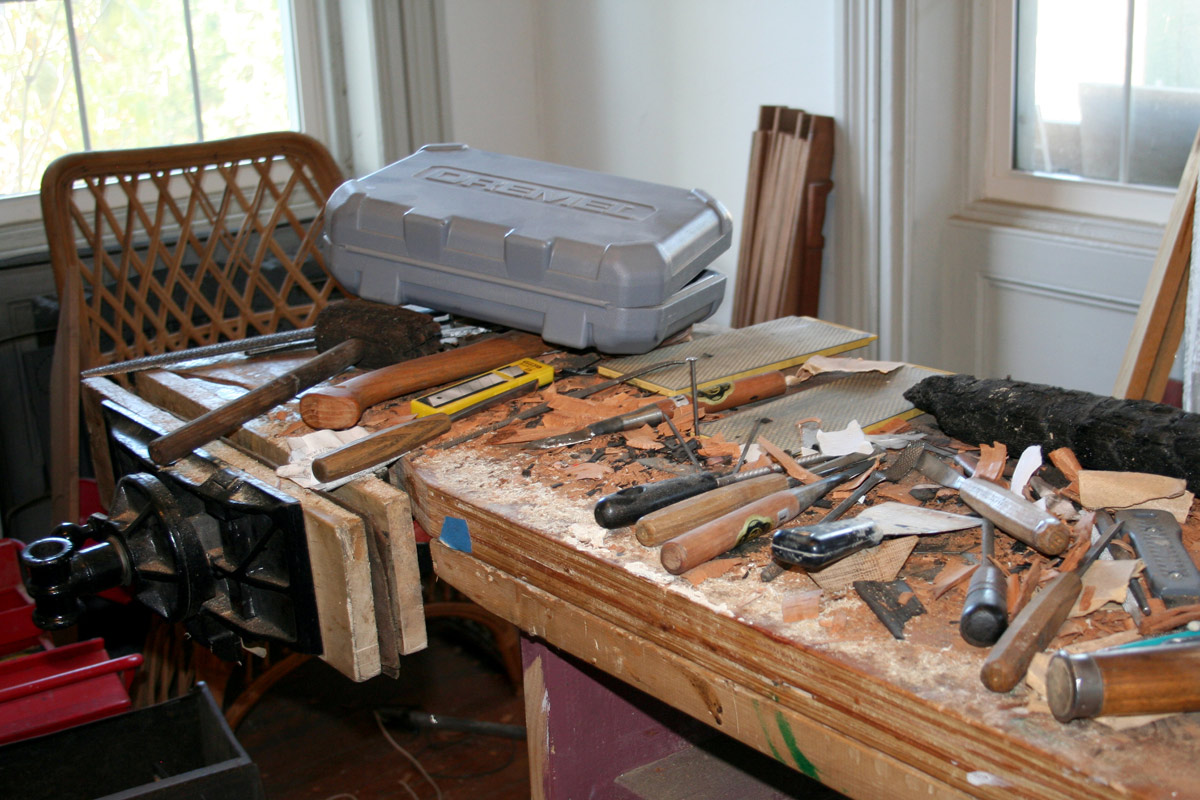
The studio visit reveals a complicated relationship between the artist and the trade that has shaped his career. Kinney himself carves quite a striking figure. Rugged yet stately with intense eyes and mild manners, he clearly inhabits his work—including his latest opus, the 19th century house that he’s building into a home/workspace. The charming brick structure is situated in Beacon, New York, on a hill that slopes toward the Hudson River and the DIA: Beacon art museum. Originally from Georgetown, Massachusetts, Kinney studied at Pratt before earning his diploma from Boston’s School of the Museum of Fine Arts. He moved to Beacon from Brooklyn in 2003 to escape the city grind. In 2012, he bought the house, saddling himself with a complete restoration job and has been working on (and in) it ever since.
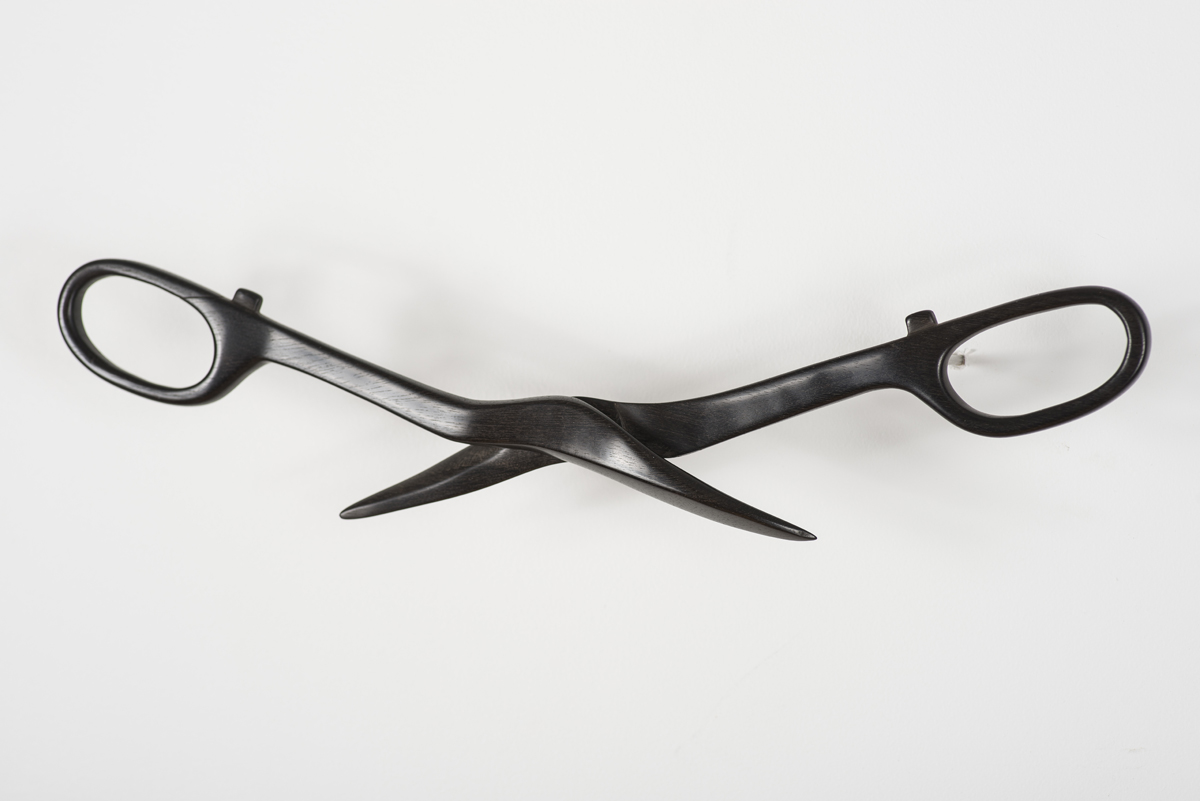
Split between construction work, home repairs and his heart’s pursuits, Kinney’s progress has been slow but steady on all fronts. Last year, he quit his main gig to focus on the latter. He vowed not to return to construction, frustrated with distractions from time spent in the studio: “That’s why I try to bring certain aspects of my art to the house… I try to put some sort of aesthetic value to what I do there. I see it as a means to an ends.” He’s since moved from a backyard tent to the master bedroom and rented out three finished rooms.
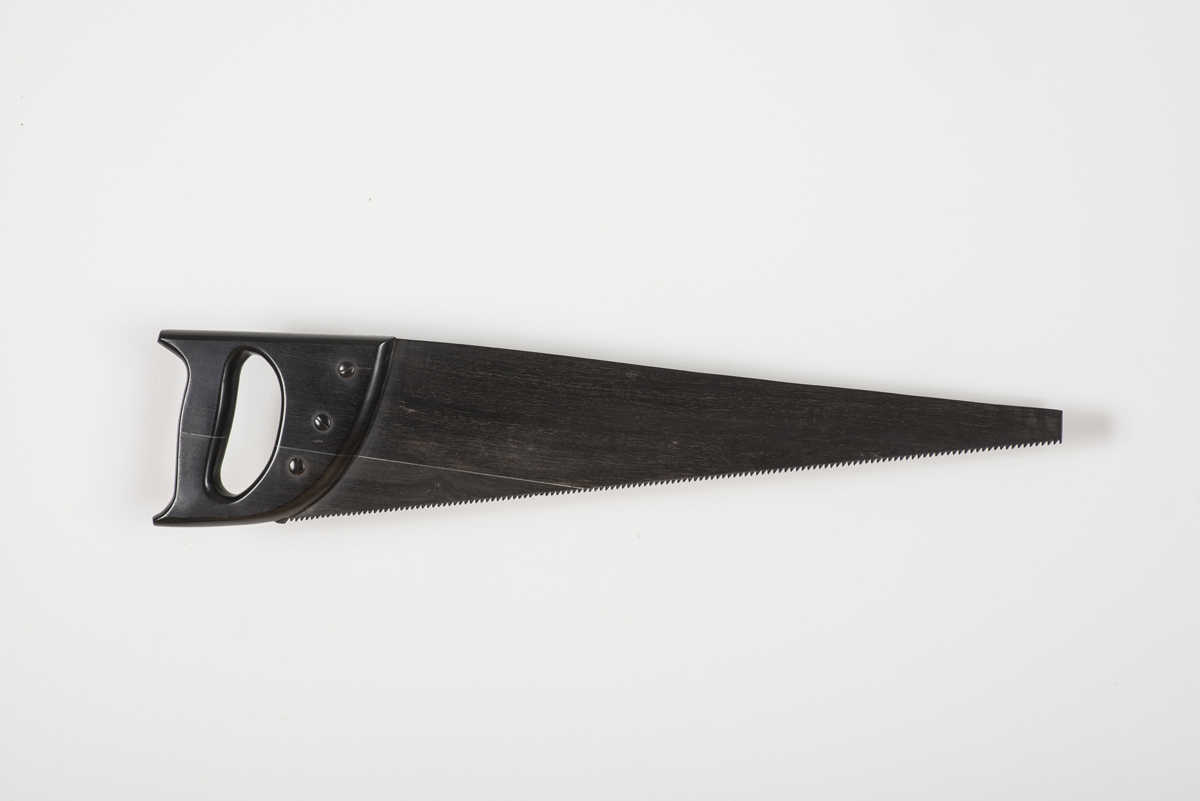
Though carpentry is not what he yearns to focus on, the experience has clearly informed his art. In his former life as a Brooklynite, Kinney worked at Rafik Video in Manhattan and focused on drawing and painting. “I would lay around the city with my pack and find cool vistas, particularly the bridges. I was inspired by the city then,” he recalls. Poet Bruna Mori published some of his sumi ink paintings in her 2006 book, Dérive. Upstate, Kinney took a job at Windfall Farms in Montgomery, New York, where he honed his carpentry skills. His artistic focus shifted from 2D representations of (dis)assembling architecture to 3D replicas of more primitive forms of human ingenuity. Kinney created his first wooden hammer for a 2010 gallery show in Beacon. “I thought it symbolized my appreciation and love for the craft, and my pursuit for something real and tangible in life,” he recalls. “Doing something practical helps to ground my [art]work and not let it get away from me too much. I refer back to my practice, my job.” Carpentry came naturally to him, and he admits it’s taken his art in a new, more fulfilling direction.
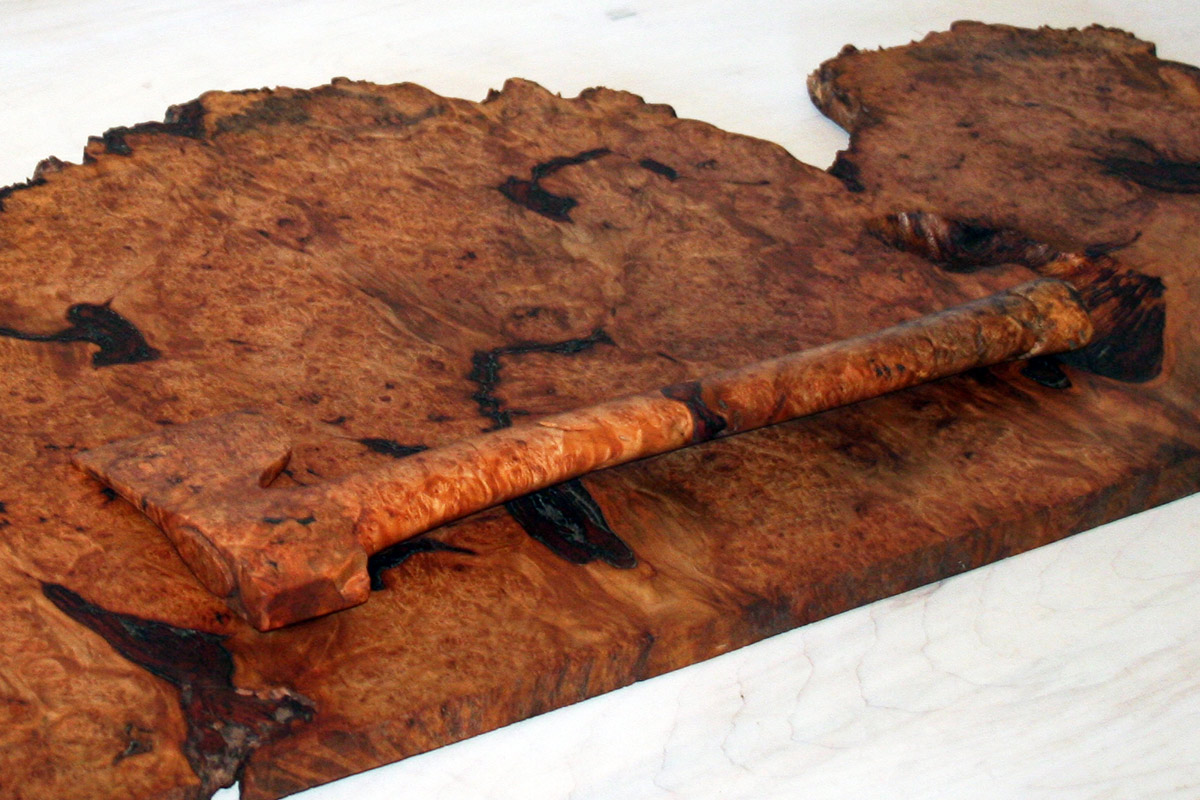
Kinney has since created a veritable toolbox of such objects—wrench, pry bar, file, screw driver, saws and several axes, to name a few. Each is striking in the subtlety of its curves and intricacy of its detail, down to the tiniest of teeth. Every group utilizes a different type of wood: black walnut, maple, rare walnut burl. Kinney demonstrates his material mastery in his most recent series, carved from rich ebony. The tree flesh assumes the hard glint of a hammer head and conveys the heft of a solid wrench. “I wanted to push my materials more, elevate the tools to another status,” Kinney comments. “By carving them in this beautiful wood—just by virtue of that quality, I think it made them more special.” The set caught the attention of art dealer Marc Straus, who currently has the collection on consignment. Kinney’s work has been exhibited widely upstate and by Ethan Cohen Fine Arts at shows in New York and at the 2012 Scope fair in Miami. “I think the most rewarding thing about art is where it can take you,” says Kinney. “I can create something and it can put me down in a show in Miami. I got myself there through my art. It’s something I made and stuck with.”
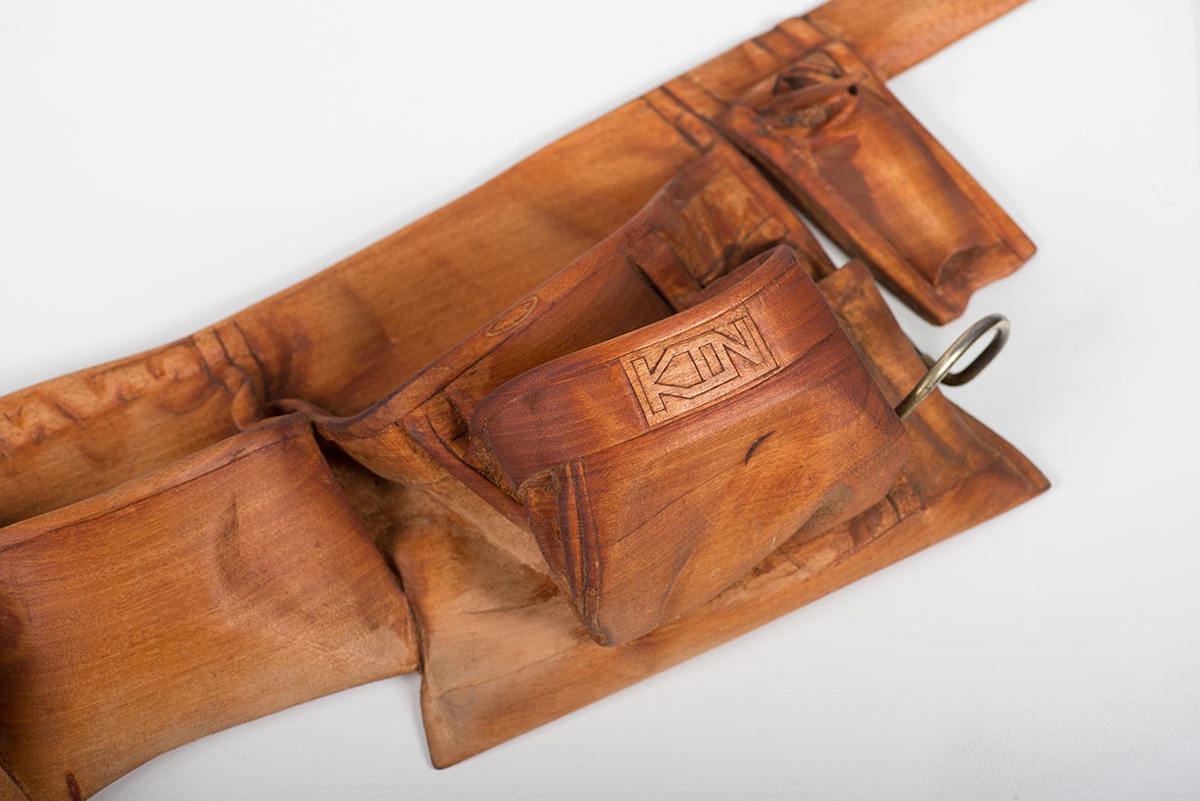
Art has also transported Kinney to new conceptual spaces, as he strives to infer more meaning into his work. The latest piece in his oeuvre represents a shift in the perspective: the larger-than-life wooden tool belt brilliantly tricks the eye. Complex, spatial, haunted by the artist himself—the sculpture (like the house) is personal and imbued with possibility. “It’s about deceiving,” he says, “but not necessarily—it’s more about not taking things for granted.” Originally conceived as the summation to a body of work, Kinney now sees the belt as a transition piece. “It’s the key to how I can move forward. It has a lot of clues about where I’m at now and where I can be, where I can put myself.” His plans include experiments with material and form. He hopes to recast his bucket series in bronze at the nearby Polich-Tallix foundry. His next wood sculpture will be a pair of carpentry gloves that “explore presence and absence of the artist.” Carving a mahogany gargoyle to guard his gutter also tops the list.
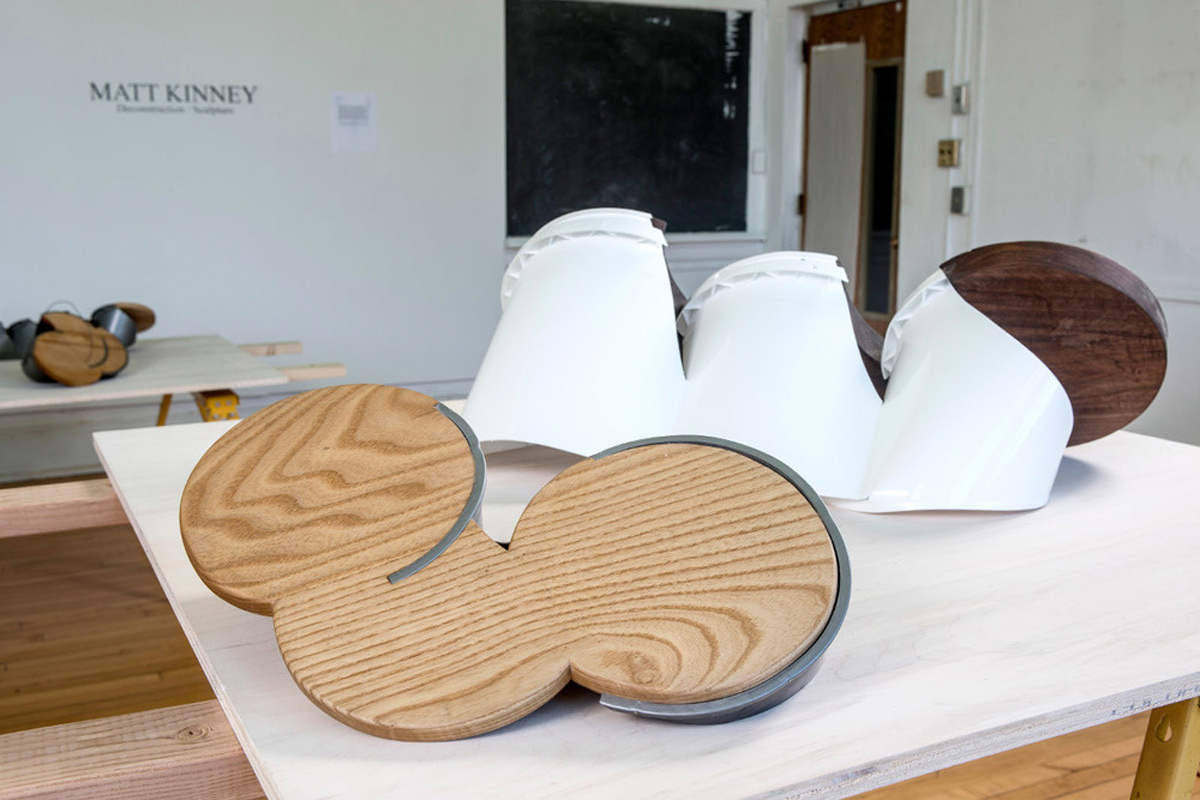
For Kinney, art and craft seem inextricably bound, though the relationship is ever-evolving. His work not only raises questions about the role of tools to trade, but of the relevance of craft within the art world at large. As digital art abounds and new technologies merge with traditional mediums, how long will artisan techniques survive? Will manipulation of data eventually trump that of material, or will they progress in tandem?
You can catch one of Kinney’s sculptures—a 13-foot fir and black walnut saw—on display at the The KuBe (Kunsthalle Beacon), an arts collective established by Ethan Cohen Fine Arts. Check out more of Kinney’s work on his website.
Lead image by Tara DiGiovanni, studio images by Janine Stankus and artwork images courtesy of Matt Kinney












